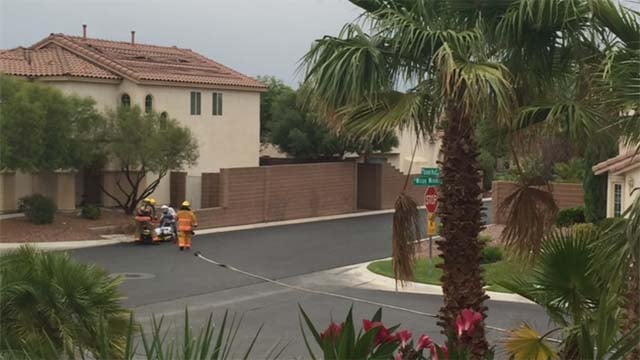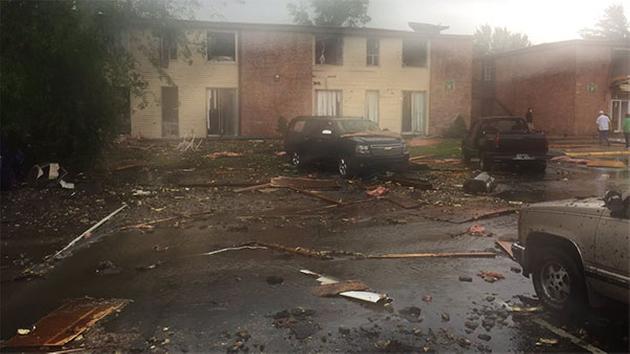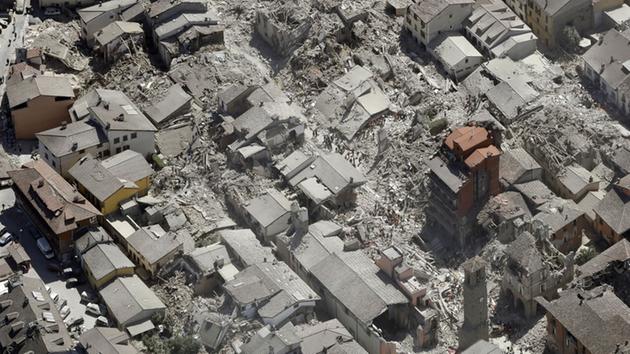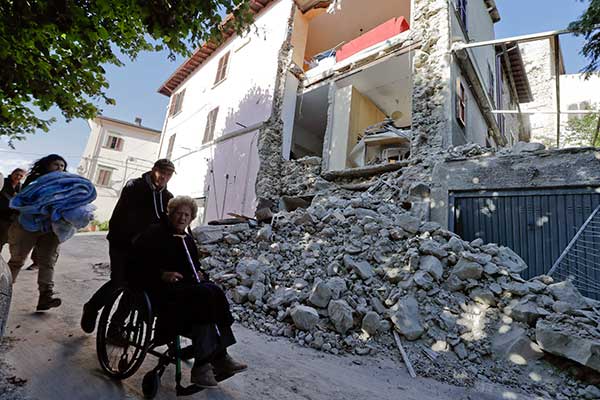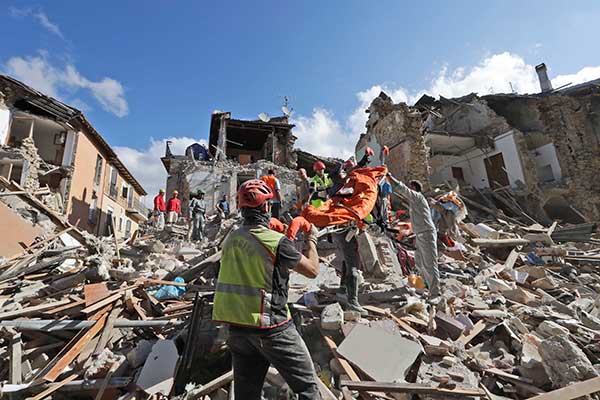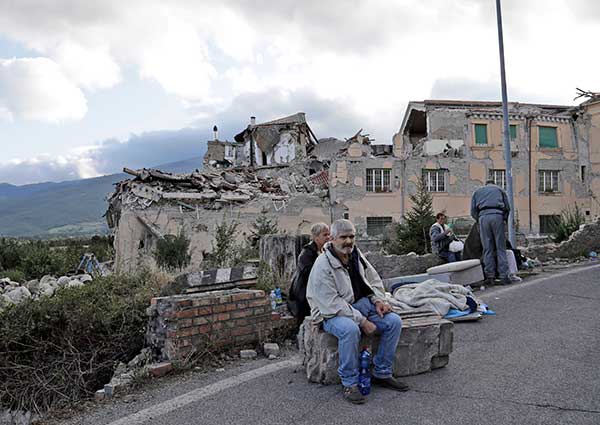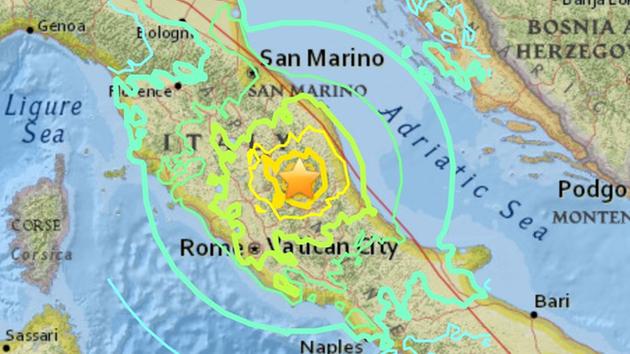
Laban Robokoff (left), 26; Harvey McKinney (center), 38; and Steven McKinney, 34.
By Caleb Downs Follow @calebjdowns cdowns@dallasnews.com
Breaking News reporter
Published: 24 August 2016 11:53 AM
Updated: 24 August 2016 12:52 PM
The families of two men who were electrocuted while working on an oil well in West Texas in 2014 are suing three Texas energy companies.
The wrongful-death lawsuit, filed last week in Dallas court, alleges that the companies created an "ultra-hazardous" work environment by placing a power line next to an oil well.
The families say the two men who were electrocuted, and another man who was severely shocked but survived, had so much electricity passing through their bodies that arcs shot from their extremities and caused a grass fire.
The families of Laban Robokoff and Harvey McKinney filed a suit against Sharyland Utilities, Quantum Resources Management and Tessco Energy Services on Friday in district court.
"I've handled some explosion and burn death cases, but I've never seen a case as tragic, horrible and gruesome as this one," said David Smith, one of the attorneys representing the Robokoffs and McKinneys.
Representatives from Quantum Resources Management were not immediately available for comment. Melanie Okon, an attorney for Tessco Energy Co., said the company is currently investigating the incident and declined to comment.
Jeanne Phillips, a spokeswoman for Sharyland Utilities, said the company has fully cooperated with the Occupational Safety and Health Administration and law enforcement investigating the accident.
"While Sharyland Utilities has a longstanding policy of not commenting on pending legal matters, and even though Sharyland personnel were not involved in this sad occurrence, still we want to express our continued sympathy and sorrow for those families and individuals who were tragically impacted by this incident in August 2014," Phillips said.
Harvey McKinney, 38, and Robokoff, 26, were working on an oil well owned by Quantum Resources Management in Colorado City on Aug. 20, 2014, the suit says. McKinney's brother, Steven McKinney; their father, Doyle McKinney; and David Wright were also at the work site that day.

Their job was to remove an electric pump from the oil well. To do so, they had to back up a truck with a crane close to the well, attach a winch line to the pump and lift it off the well.
OSHA regulations require all power lines to be at least 10 feet from an oil well, but Smith said the power lines and oil well are situated in such a way as to make it "impossible" to work on them farther than 10 feet away. According to the suit, Tessco Energy Co. installed the power lines next to the well.
Wright, who was driving the truck, backed it up into a nearby power line while Robokoff was holding the winch line, ready to attach it to the pump. Thousands of volts of electricity passed through his body and exited out of his extremities, causing a grass fire, Smith says.
"The autopsy photos are just horrible," Smith said.
Harvey McKinney saw Robokoff, who is referred to as his "adopted brother" in his obituary, being electrocuted and rushed to the truck to grab the fire extinguisher. Upon touching the truck, though, he was also electrocuted.
Steven McKinney then tried to separate his brother from the truck, but when he touched McKinney, he, too, was shocked. He survived, but his fingertips were burned off "to where there was nothing left of the flesh," according to Smith.
Robokoff and Harvey McKinney died at the scene, and Steven McKinney was flown to a hospital in Lubbock for specialty treatment.
Meanwhile, Doyle McKinney, who had tagged along that day to watch his two sons work, instead watched as one of his sons died and the other was severely injured.
"He could see the sparks," Smith said. "He could smell the smell. How could you live with yourself after seeing that? Living for him is a constant struggle."
The suit accuses Sharyland Utilities, Quantum Resources Management and Tessco Energy Services of gross negligence for creating a hazardous work environment. Also included in the suit is David Wright, who drove the truck into the power lines.
"It's a 'Why not?' situation," said Smith, one of the attorneys representing the Robokoffs and McKinneys. "Why not do something to prevent even the likelihood of something like this from happening? I don't understand the mentality of it."
===============
Two dead, one injured in Mitchell County oilfield electrocution
BY: LaGarde Law
Sep 15
On August 20, a team of three Texan oilfield workers were removing a pump jack when one of its cables struck a power line overhead. The connection electrocuted Laban Robokoff, 24, and Harvey McKinney, 36, killing them both. CPR was performed, but they were pronounced dead enroute to the hospital. Steven McKinney, 32, Harvey McKinney’s brother, was taken to a Colorado City hospital, then flown to a hospital in Lubbuck, where he is expected to recover steadily.
The Mitchell County Sheriff’s Office stated that McKinney may be ready for release within a few days. Sheriff Patrick Toombs outlined the accident. According to his statement, the McKinneys and Robokoff were disassembling the pump jack in order to move it with a winch truck.
As the truck backed up, Robokoff was pulling back a cable of the jack, which was in contact with the truck. When the cable touched the power line, it electrocuted Robokoff. Harvey McKinney, who was walking behind the truck, touched it in response. The power surged through the cable to the vehicle, killing McKinney as well. The driver of the truck was not injured. Toombs said that officials are currently unsure why the cable struck the electric line.
All three were employed by Rayco Pumping Unit Service of Midland.
OSHA has launched an investigation into the incident. Investigators have not yet determined fault in the accident. Potential factors include the location and height of the power line, equipment failure, lack of supervision and unsafe working conditions in the oil field. Careful consideration will be required before any conclusions can be drawn.
================================
Overview of Worker Deaths Involving Support Activities in Oil and Gas Operations
By KYLA RETZER, SOPHIA RIDL AND CHRISTA HALE
National Institute for Occupational Safety and Health

Among well servicing companies who provide oil and gas extraction support activities, a 33 percent decrease in fatality rates was observed, despite a 245 percent increase in the workforce.
Recently, NIOSH analyzed and published an article describing trends in oil and gas extraction worker fatality rates during 2003–2013. We found that fatality rates decreased significantly, despite tremendous industry growth. Among well servicing companies who provide oil and gas extraction support activities, a 33 percent decrease in fatality rates was observed, despite a 245 percent increase in the workforce. This improvement is undoubtedly due to the efforts of many to improve the health and safety of the workforce and should be celebrated. However, workers continue to be injured and killed on oil and gas wellsites and little is known or being reported about these events.
In 2014, NIOSH launched a new database to collect information on oil and gas extraction worker deaths. It is called the “Fatalities in Oil and Gas Extraction” database or FOG. The database contains variables specific to the oil and gas extraction industry with the purpose of better characterizing hazards to workers. To develop FOG, we worked closely with industry health and safety experts, trade associations, Association of Energy Service Companies (AESC), International Association of Drilling Contractors (IADC), American Petroleum Institute (API), National STEPS Network, OSHA, the Bureau of Labor Statistics, and OSHA Education Centers.
NIOSH will use FOG data to develop summary reports and special topic reports. Reports will contain descriptions of identified fatal incidents, maps pinpointing fatality sites, and the number of fatalities organized by operation type and other categories. Following is a brief summary of what we have identified about worker deaths during oil and gas support activities for the first half of 2014. Please look for the full report to be published very soon on our website: www.cdc.gov/niosh/topics/fog/.
 Summary of Worker Deaths, January–June 2014
Summary of Worker Deaths, January–June 2014 We identified 26 oil and gas support activity workers who died from January to June 2014. Twenty-four (24) of the workers who were fatally injured worked for companies that provide “support activities for oil and gas operations” (NAICS 213112) and two workers were employed by “specialized freight” companies (NAICS 4842). In this report, we provide a description of the fatalities by the type of event. Table A shows the number of fatalities by the type of operation being performed.
Explosions—Explosions caused five worker deaths in three separate incidents, two involved high pressure and one was caused by flammable materials. In the first incident, two workers died during a coiled tubing operation. A pipe connection started leaking while fluid was being pumped into the well bore. In an attempt to stop the leak, a worker struck the pipe connection with a hammer, causing the pressurized pipe to explode. In the second incident, two workers died in a high-pressure explosion of a sand separator that did not have a pressure relief valve. An improper valve line-up caused pressure buildup in the sand separator. The fifth worker died in an explosion in a welding shop when he was working on top of a crude oil storage tank that contained explosive gases and vapors.
Struck-by—Four workers died during struck-by incidents. The first worker died when he was crushed by equipment that unintentionally disconnected from a crane on a hydraulic fracturing worksite. The second worker died during rig maintenance while he was working from a material basket that was not secured to the forklift. The basket fell off the forklift and the worker was crushed by the basket. The third worker died when a service rig floor fell on him as it was being winched up and the cable bridle broke. The fourth worker died when the clothing of an excavator operator unintentionally activated the excavator bucket joystick. The bucket struck the head of the worker, who was on the ground next to the excavator.
Exposure—Five workers died during exposure to harmful gases or vapors. One worker died in a mobile heating unit when he went to investigate an issue with the heaters. It is suspected the worker died from carbon monoxide poisoning. Four workers died while collecting samples or manually gauging crude oil production tanks. Three of the workers were truckers and one worker was a flow tester. Hydrogen sulfide was determined to not be a factor. Overexposure to hydrocarbon gases and vapors is believed to be a contributing factor in these deaths. (NOTE: for more information on these and other similar deaths, please see the FOG special report at: http://www. cdc.gov/niosh/topics/fog/data.html. To see the Hazard Alert issued by the National STEPS Network and its partners, go to: http://www. nationalstepsnetwork.org/docs_ tank_gauging/.
Off-Site Motor Vehicle Incident—Three workers died in a motor vehicle crash when their van collided with a school bus. The seven-man crew was returning from a 24-hour shift. Driver fatigue is believed to be a factor. The workers who died were not wearing seatbelts.
On-Site Motor Vehicle Incident— One worker died in an on-site vehicle incident when a welding truck backed into a worker who was engaged in winching activities.
Fall—A worker died from a 30-foot fall when he reached inbetween the guardrail system and fell through the guard rails.
Fire—A worker died in a fire while he was removing a valve on the heater treater. The heater treater began to leak and caught on fire.
Electrocution—One worker was electrocuted when a rig-up truck made contact with overhead power lines. A three-man crew was removing a pump jack from a well site using a rig-up truck equipped with an A-frame boom.
 Undetermined—Five worker deaths contained insufficient information to determine work relatedness or cause of death (not associated with tank gauging or sampling).
Undetermined—Five worker deaths contained insufficient information to determine work relatedness or cause of death (not associated with tank gauging or sampling). Summary
There has been a recent decrease in worker fatality rates and this improvement in safety is to be commended. However, workers continue to be injured and killed on oil and gas wellsites and it is important to remain vigilant. Companies should frequently evaluate their operations and implement controls and safeguards where necessary to prevent similar incidents at their worksites. The Hierarchy of Controls (Chart A) is a well-established approach for determining the most effective methods to protect workers and can help guide the selection of controls necessary to prevent these hazards.
Well servicing companies provide a wide range of services to bring a well into production and keep it maintained. As a result, hazards will vary by the operation and task. Reviewing your company’s incidents (including near misses) will help your company to identify your greatest hazards.
NIOSH Can Use Your Help
Our FOG system does have limitations. We do not currently capture all deaths in the industry, especially deaths to workers resulting from motor vehicle crashes. We need help from industry in identifying worker deaths. If you become aware of an oil and gas worker who dies while working, we would greatly appreciate notification at nioshoilgasfog@cdc.gov. The information you provide could help to improve safety for workers in this industry.












